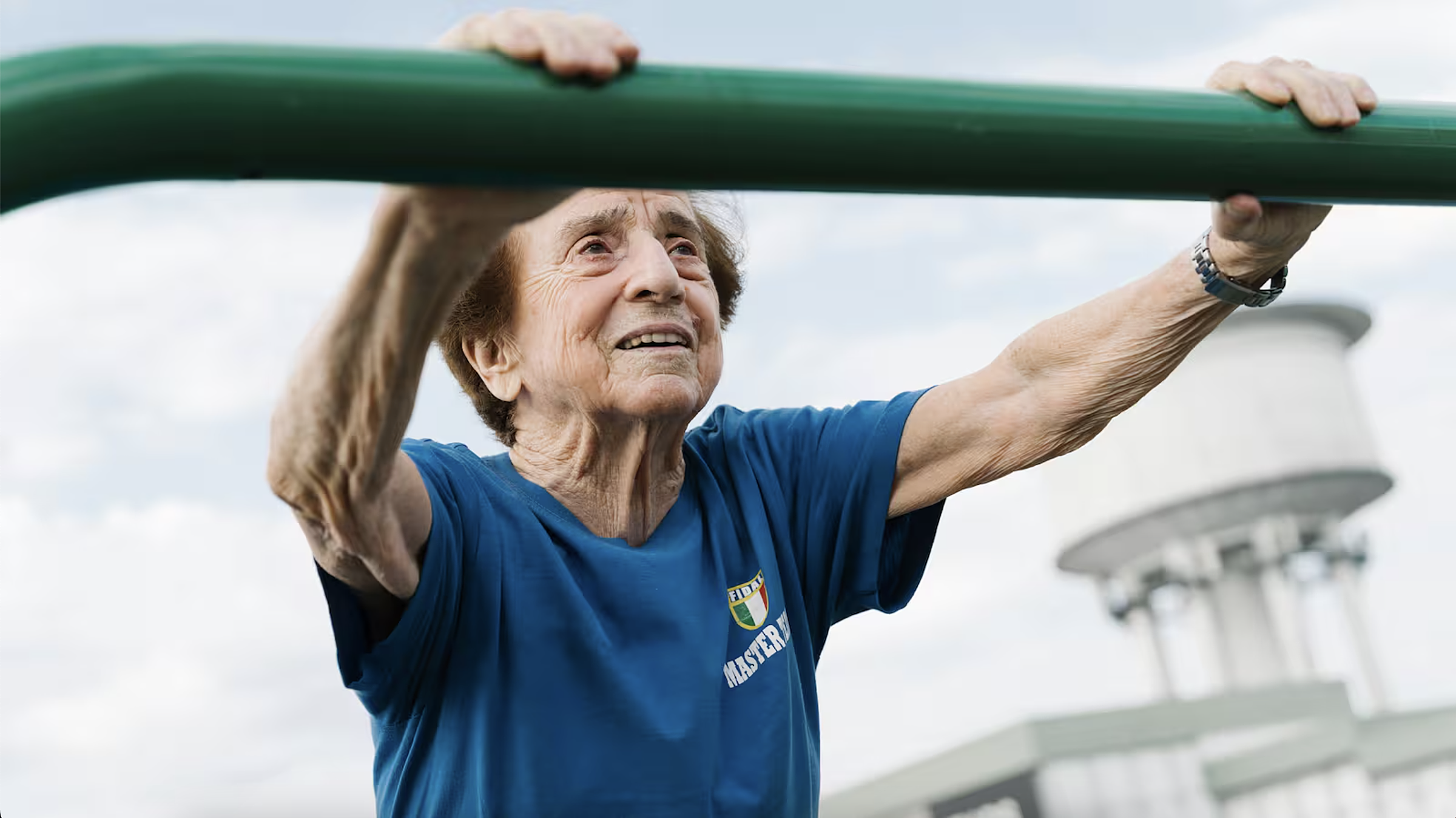Mazzenga currently holds 4 world records in the women's over-90 category and has become a unique subject for research into anti-aging secrets. Last year, she broke the world outdoor 200-meter record for women over 90, then improved it by one second in her next competition. Remarkably, in both events, she ran alone, without any competitors. "In Italy, it's just me, and at the world championships, it was just me and an American," she shared in a phone interview last July.
Scientists in Italy and the US are analyzing Mazzenga's muscles, nerves, and mitochondria—the "powerhouses" of cells—to understand how she maintains her sprinting ability at 90. This research is part of a multi-year effort by Italian experts to understand how muscles change with age.
Marta Colosio, a doctoral student at Marquette University and the study's lead author, confirms that they haven't found any other 90-year-olds comparable to Mazzenga. "She is still aging, but she can do things that 91-year-olds can't," Colosio observes.
Simone Porcelli, co-leader of the research team and associate professor of human physiology at the University of Pavia, read about Mazzenga's record and contacted her to invite her to participate in a project measuring the physical function of over 100 middle-aged and older adults. "She was the perfect subject for our project," he stated.
Chris Sundberg, co-leader and director of the Muscle Physiology and Energetics Laboratory at Marquette University, explains that studying exceptional older athletes helps explore the possibilities of aging.
Mazzenga, a retired high school science teacher, still subscribes to scientific journals and eagerly participated in the research. One morning last spring, Porcelli drove two and a half hours to pick her up and bring her to the University of Pavia for a full day of testing.
At the lab, researchers took a muscle sample the size of a pencil eraser from Mazzenga and airlifted it to Marquette University for testing. Under the microscope, her muscles showed a mix of the ordinary and the extraordinary.
Mazzenga's fast-twitch muscle fibers, associated with speed, resembled those of a healthy 70-year-old—good for her age but not exceptional. She had some muscle loss due to normal aging. However, her slow-twitch muscle fibers, associated with endurance, looked like those of a 20-year-old. Mazzenga underwent cycling and weightlifting tests to assess her cardiovascular fitness and leg strength, both of which yielded good results.
Slow-twitch muscle fibers are rich in mitochondria, myoglobin, and capillaries, specializing in endurance activities, fatigue resistance, and maintaining posture like long-distance running, while fast-twitch fibers specialize in powerful, high-speed movements but tire quickly.
"Whether it's due to genes or lifestyle—or a combination of both—she maintains communication between her brain, nerves, and muscles at a much healthier level than a typical 90-year-old," Sundberg analyzes.
Colosio presented preliminary findings at conferences in Baltimore and Italy earlier this year. The team is planning to submit three articles for peer review in academic journals. "We haven't finished studying the muscles yet," Sundberg says, adding that many other experiments are underway to get a complete picture of what's happening in Mazzenga's muscles.
 |
Emma Maria Mazzenga has the cardiovascular fitness of a 50-year-old and mitochondrial function in her muscles comparable to a healthy 20-year-old. Photo: Washington Post |
Emma Maria Mazzenga has the cardiovascular fitness of a 50-year-old and mitochondrial function in her muscles comparable to a healthy 20-year-old. Photo: Washington Post
Mazzenga started track and field at the University of Padua at 19, where she studied biological sciences. After graduating in 1957, she continued competing but stopped after 4 years because her mother became ill. Two years later, she married and had two children. It wasn't until 25 years later, at 53, that she returned to running.
Now, in the summer, she trains at the Colbachini Stadium in Padua or on the riverbank near her home. She runs two or three times a week and walks on rest days. "I'm never indoors all day," she affirms.
Mazzenga's training sessions last about an hour, starting with a slow warm-up run, followed by short runs of about 500 meters. Next, she practices her competition distances with rest periods between runs.
Her advice for older athletes is to know their limits, consult a doctor before starting, and maintain consistency by running several times a week. During the Covid-19 pandemic, she ran in the 20-meter-long hallway in her house or snuck out for runs around the neighborhood at night.
"Sports have given me so much. I think they saved my life. I don't like just living through the day—waiting for it to get dark. I need action," Mazzenga shares.
Bas Van Hooren, assistant professor of nutrition and movement sciences at Maastricht University, has published three studies on exceptional runners in their 70s. The key to their success is persistence. "Many adverse effects of aging can be significantly reduced by maintaining very high levels of physical activity," he says, adding that it's never too late to start—all the athletes he studied began training in middle age.
Luigi Ferrucci, scientific director at the National Institute on Aging in Baltimore, considers the findings "very good," but emphasizes that healthy aging isn't just about muscles. Maintaining physical and mental activity in old age requires a holistic approach to nutrition, cognition, and exercise.
Regarding her diet, Mazzenga says she eats "what I usually eat" and cooks very simple dishes like steak, fish, fried eggs, a little pasta, and rice. She avoids eating three hours before running.
Mazzenga is currently training to compete in the 100 and 200 meters in September in Catania. After the competition, she plans to return to the University of Pavia for further testing. In November, she will begin indoor training for the winter. "But at my age, that's not certain," she adds. "I plan month by month, not further ahead."
Hoang Dung (According to Washington Post)












